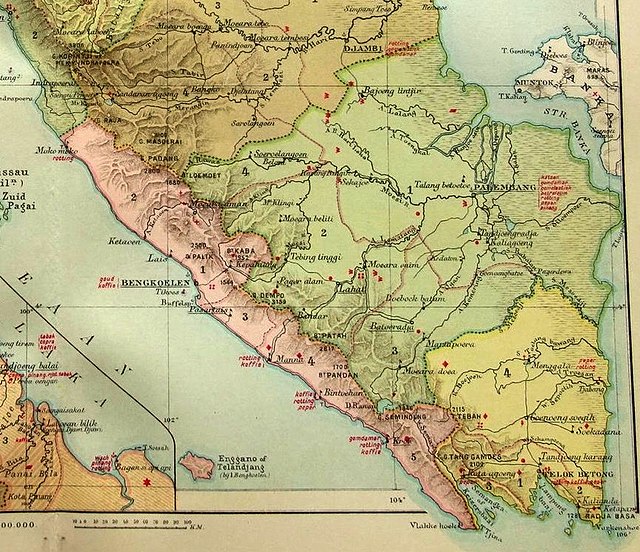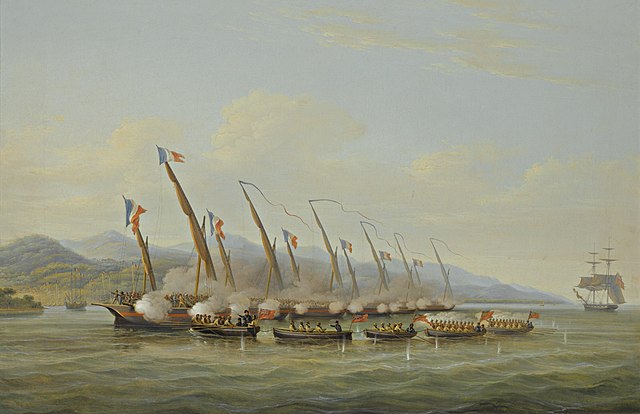Sir Thomas Stamford Bingley Raffles was a British colonial official who served as the governor of the Dutch East Indies between 1811 and 1816 and lieutenant-governor of Bencoolen between 1818 and 1824. Raffles was involved in the capture of the Indonesian island of Java from the Dutch during the Napoleonic Wars. It was returned under the Anglo–Dutch Treaty of 1814. He also wrote The History of Java in 1817, describing the history of the island from ancient times. Rafflesia flower was named after him.
Portrait by George Francis Joseph, c. 1817
The memorial to Olivia Mariamne Raffles, Raffles's first wife, erected by him along the Kanarielaan in the National Botanical Gardens (now the Bogor Botanical Gardens). Raffles re-landscaped these gardens, which were established in 1744 in Buitenzorg (now Bogor), West Java.
Territory of Bencoolen (pink)
Stamford Raffles
The Invasion of Java in 1811 was a successful British amphibious operation against the Dutch East Indian island of Java that took place between August and September 1811 during the Napoleonic Wars. Originally established as a colony of the Dutch Republic, Java remained in Dutch hands throughout the French Revolutionary and Napoleonic Wars, during which time the French invaded the Republic and established the Batavian Republic in 1795, and the Kingdom of Holland in 1806. The Kingdom of Holland was annexed to the First French Empire in 1810, and Java became a titular French colony, though it continued to be administered and defended primarily by Dutch personnel.
British Army landing at Cilincing, Java.
Batavia, capital of Dutch East Indies, with citadel in the background.
Captain Robert Maunsell capturing French Gunboats off the mouth of the Indramayo, July 1811
Diagram of Fort Cornelis, Batavia.








